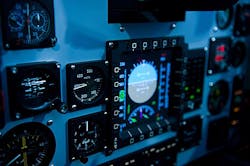Pentagon reinforces mandate for electronics design open-systems standards like SOSA, FACE, and VICTORY
WASHINGTON – Top U.S. military leaders are reinforcing their commitment to open-systems standards for embedded computing and electronics design, as outlined in a memorandum signed last week by the secretaries of the U.S. Navy, Army, and Air Force.
The memo, directed to the Pentagon's service acquisition executives and program executive officers, calls out existing and emerging open-systems standards that fall under the umbrella of the so-called Modular Open Systems Approach (MOSA) project.
Specifically, the memo mentions the Sensor Open Systems Architecture (SOSA); Future Airborne Capability Environment (FACE); Vehicular Integration for C4ISR/EW Interoperability (VICTORY); and Open Mission Systems/Universal Command and Control Interface (OMS/UCI).
Many of these and similar electronics design industry standards are under supervision of The Open Group in San Francisco.
"MOSA supporting standards should be included in all requirements, programming, and development activities for future weapon system modification and new-start development programs to the maximum extent possible," the memo lays out.
Signing this memo are Navy Secretary Richard Spencer, Army Secretary Mark Esper, and Air Force Secretary Heather Wilson.
SOSA, which revolves around the VITA OpenVPX embedded computing standard, focuses on single-board computers and how they can be integrated into sensor platforms. It involves a standardized approach on how embedded systems interrogate sensor data to distill actionable information.
The Pentagon-backed FACE open avionics standard is to enable developers to create and deploy applications across military aviation systems through a common operating environment. It seeks to increase capability, security, safety, and agility while also reducing costs.
VICTORY aims at military vehicle electronics (vetronics) components, subsystems, and platforms interoperability. It is for multi-vendor implementation, and is considered a critical enabler for the Assured Position, Navigation and Time (APNT) program; several programs of record require VICTORY standards. VICTORY focuses on three core areas: tactical systems capabilities; host and network system capabilities; and vehicle system and logistics capabilities.
The OMS/UCI standard concerns a common message set that enables interoperability across several different manned and unmanned weapon systems. It focuses on interoperable plug-and-play software applications that run on a wide variety of systems, and enable designers to integrate new capabilities quickly in much the same way that smart phone users download applications.
It establishes a common messaging set for machine-to-machine communications in aircraft command and control. It provides an open-systems standard for easy integration of new services and reuse of services among different programs.
Related: Army to define common operating environment for FACE Consortium avionics work
"We have reviewed the capabilities of these common standards," the service secretaries' memo states. "We determined the continued implementation of these standards, and further development of MOSA standards in areas where we lack them, is vital to our success."
The service secretaries say the Pentagon's service acquisition executives will publish specific implementation guidance for military acquisition programs, and encourage standardization executives to continue developing open-systems standards where necessary to ensure electronics interoperability, rapid systems development, secure operation, and fast military deployment.
For more information contact The Open Group online at www.opengroup.org.
Ready to make a purchase? Search the Military & Aerospace Electronics Buyer's Guide for companies, new products, press releases, and videos

